Features of bluegrass for the lawn and its sowing
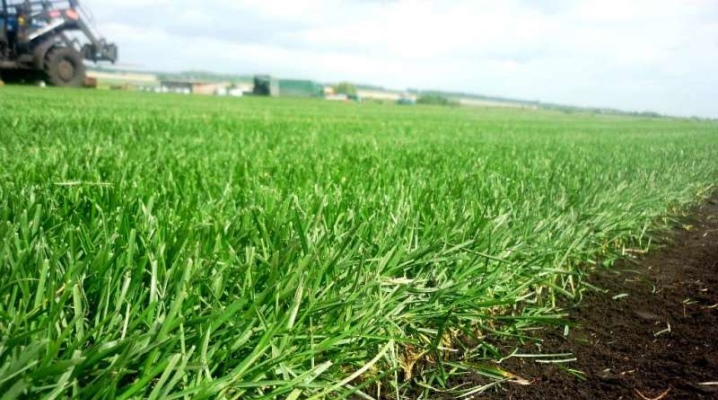
When choosing bluegrass for a lawn, you need to familiarize yourself with the description of this grass, with the characteristics of rolled bluegrass. Additionally, you will have to study the characteristics of the seeds, finally, it is useful to familiarize yourself with the reviews of the owners of lawns sown with this grass.
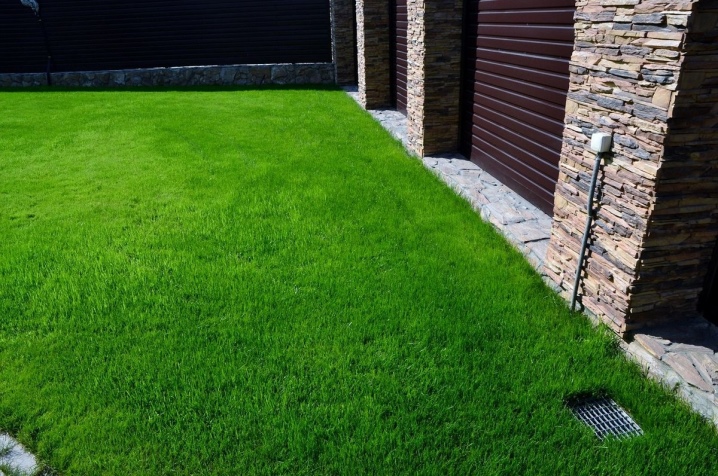
Specifications
Lawn bluegrass looks like an ordinary fine-grained perennial herb with a powerful rhizome. It appears before any other cereals - you can see it as soon as the snow has melted. A similar culture can be found in almost every country in the world. Previously, bluegrass was used as a forage grass, but now it has become a full-fledged lawn crop.
The formation of the root system occurs at an average intensity; it belongs to the loose fibrous type and occurs mainly in the upper horizon of the earth. The length of the roots is 0.2-0.9 m in different cases.
If not cut, bluegrass sometimes grows up to 0.9 m in height. Its leaf blades, 0.4 cm wide, are flat; there are both completely naked and leaves with arachnoid hairs at the base. The pyramidal panicle is quite spreading, its length is from 5.1 to 20.3 cm. The branches are clearly grouped in 3-5 pieces, there are also 3-5 flowers per spikelet. The size of the elongated bluegrass seeds is 0.13-0.3 cm, their average weight is 0.3 g.
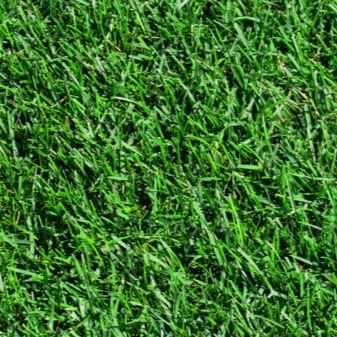
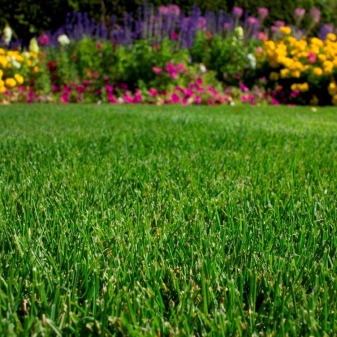
You can admire the flowers in the first half of summer. The plant does not make special requirements for the quality of the land, but it is better to plant it in loose, moderately moist soil saturated with nutrients. You should not be afraid of strong fluctuations in humidity - bluegrass tolerates them well.
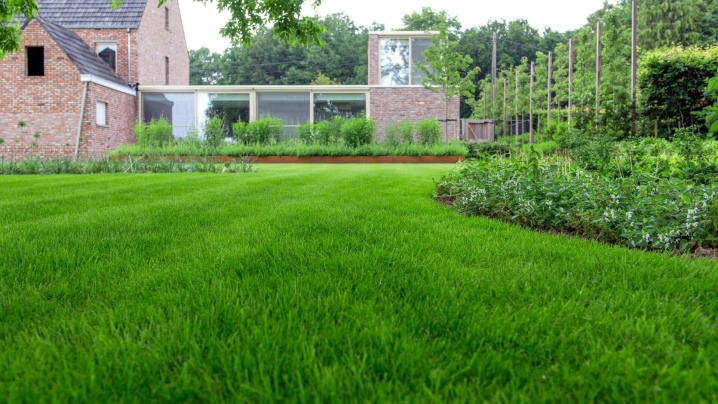
To see a lot of shortened leaves and to force tillering, you need active sunlight. Rhizomes are very stable, they may contain underdeveloped shoots. Underground shoots increase sod formation. In dry weather or on overdried soil, short shoots are likely to form. The rhizome ceases to develop in late winter - early spring.
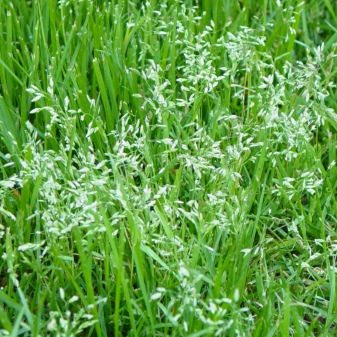
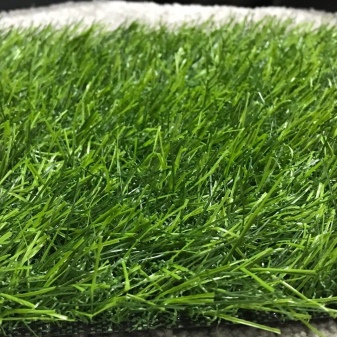
A roll lawn based on bluegrass is able to decorate any suburban area or local area. It will take a little time to decorate the space. The grass will be a bright green and always uniformly dense. There are varieties with increased resistance to cold.
For sports training, it is better to choose a combination of bluegrass with ryegrass.

Advantages and disadvantages
Meadow bluegrass is excellent for decorating lawns according to "external data", in addition, it perfectly tolerates many plant diseases. This culture will ripen early enough, and therefore at the very beginning of the season it will delight the owners of the plots. You can walk on bluegrass relatively calmly - it is almost not subject to trampling.
The following characteristics also speak in favor of such a plant:
- small requirements for the composition of the land (no more than for ordinary garden crops);
- excellent survival rate in case of frost and desiccation;
- the possibility of growing in one place up to 40 years;
- effective regeneration in case of any deformations;
- the formation of a uniform carpet;
- ease of daily care.

But the meadow bluegrass also has pronounced disadvantages:
- long period of development (sod is finally formed only in the second year after sowing);
- after precipitation, birds usually peck the lawn;
- rolled lawn is expensive, and its transportation can hardly be called cheap;
- a good effect is achieved only under the condition of maximum similarity of the land used with that which was in the nursery.

Types and popular varieties
Not all varieties of meadow bluegrass are created equal. Some of them are in very high and stable demand. So, Canadian type grown in perennial format and distributed itself. This crop can be planted with confidence in acidic soil with limited fertility. Also, Canadian meadow bluegrass wins comparison with other varieties in terms of drought tolerance.
This culture is also appreciated for:
- ease of recovery after any deformations;
- ease of introduction into any grass mixture;
- simplified maintenance.
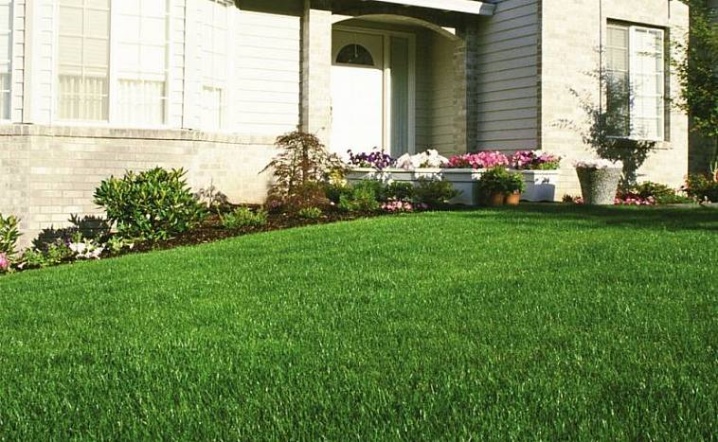
If you need to make a sports field or even an amateur football field, it is much better suited variety "Midnight"... It tramples a little and tolerates bad weather very well. Serving such plants is easy.
Midnight bluegrass will give a thick and dense coating. And he almost never gets sick.
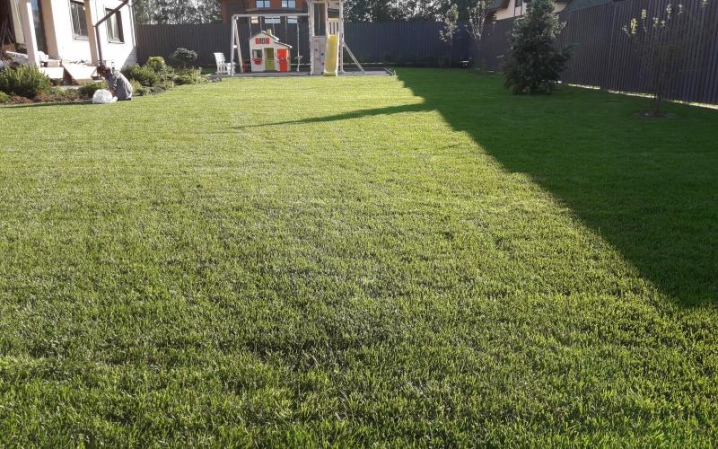
Bluegrass "Panduro" praised for its beautiful coloration. It also has excellent immunity and wears out little. Such a covering is suitable for an ordinary home sports ground or for a lawn where they will sunbathe. It is also important to note the excellent resistance to saline soils, as well as to various diseases. The plant's immune system effectively repels leaf blight.
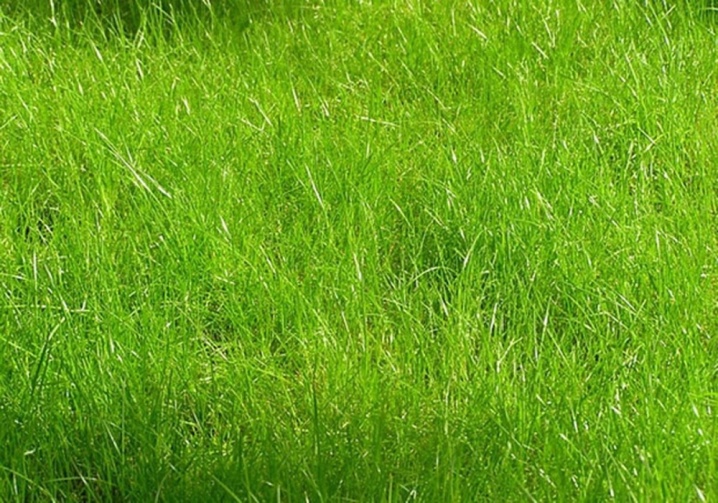
A good alternative is grade "Boutique"... It is praised for its excellent combinations with other grasses used in turf formulations. The surface will have a deep green color. The "boutique" is easily and quickly restored if it has been damaged or has survived a heavy load. Even during periods of short-term droughts, the color does not change.
The variety belongs to the elite category. It forms low-growing lawns. Excellent resistance to low undercut mowing is guaranteed. Compatibility with other bluegrass varieties is also guaranteed. The density of the grass remains even in extreme heat.
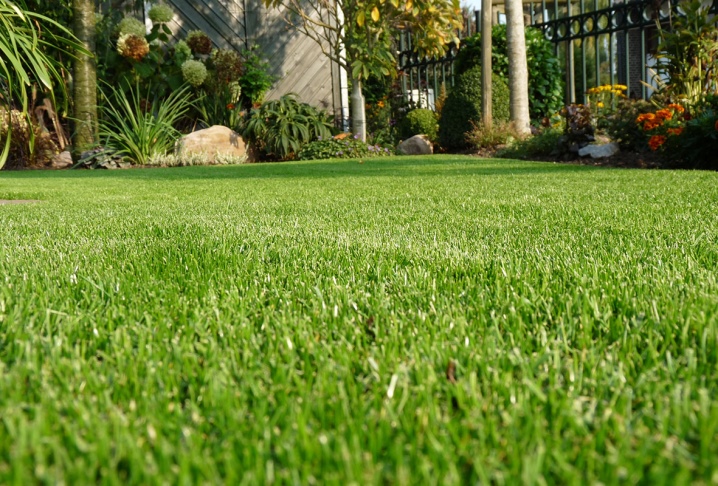
And here Balin tolerates a rather severe frost. In this variety, the grass cover has a delicate green color. Rooting is very fast. Even under the snow "Balin" will retain its attractive green color.

When purchasing fast-growing plants, you should give preference to bluegrass "Platini"... It will provide a dense ground cover. This is the grade that is recommended for preparing golf courses. Platini is comfortable to cut, and the culture responds well to this procedure. It grows well even with temperature fluctuations and prolonged bad weather conditions; It is also worth noting that Platini bluegrass is suitable for a wide variety of climatic zones.
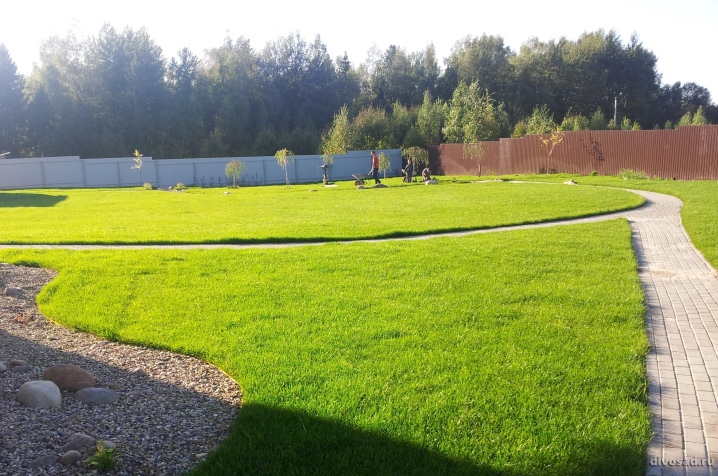
Alternatively, they usually choose:
- "Compact" (practically universal, also suitable for pastures);
- "Connie" (weak growth is compensated by excellent decorativeness);
- Dolphin (undersized, with good sod);
- "Geronimo" (recommended for wear-resistant lawns with a dense structure).

Seed selection
When choosing a seed, it would be rash to focus only on the properties of specific bluegrass varieties. It is better to choose a product taking into account certification both in Russia and abroad.
Practice shows that the presence of these two certificates at once protects well against unpleasant surprises.
When thinking over the combinations of the herbal mixture, it is important to focus on varieties that will grow in a certain climatic zone and correspond to the type of lawn being formed. They buy a small amount of seeds and carry out a trial sowing (not necessarily in the ground, you can also use grains soaked in hot water, laid out in the middle of the sawdust).
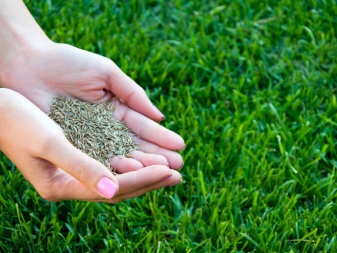
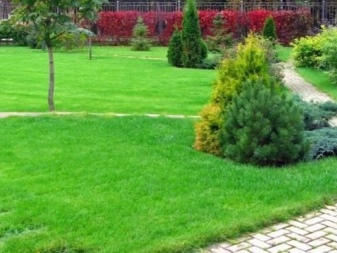
How to sow correctly?
Much depends, of course, not only on the quality of the planting material, but also on the correct handling of it. Work begins with the preparation of the substrate. Despite the versatility of bluegrass, it is best to use slightly acidic loams. A good, beautiful lawn can be obtained by digging up the soil and removing all the weeds.
Additionally, it is recommended to lime, tamp and level the site.
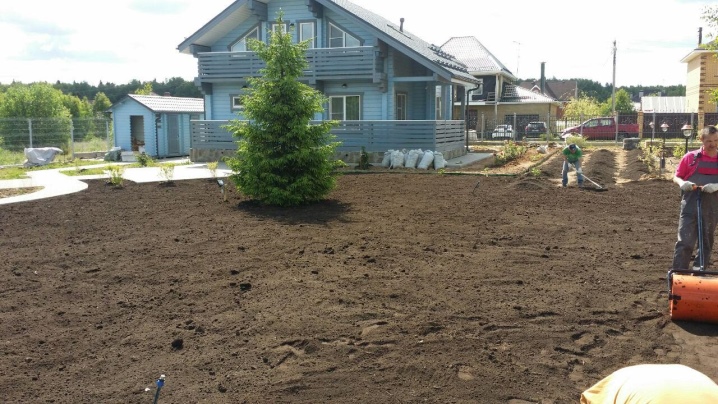
For the sowing procedure itself, a universal lawn seeder is optimal. In its absence, you need not look for other similar tools, but work manually. Grains are first of all placed along the future lawn, and after that - across. This approach will eliminate uneven distribution. A fertilizer containing potassium and nitrogen is usually poured directly with the seeds.
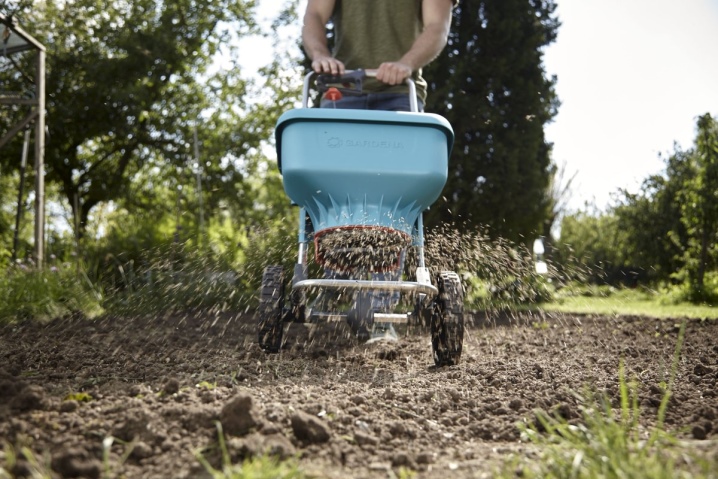
You need to sow an average of 10-15 g of seeds per 1 m2. The soil needs to be compacted after sowing - otherwise the seeds will not be fixed. A roller and rake are used for compaction. The sowing depth is approximately 0.2 cm. Normal development of a bluegrass lawn is possible in the spring and summer months, but only with decent lighting.
Slow growth during the first season is normal. It will take about a month to wait for the blades to come out. It will take some more time for the gradual overgrowing with bushes.
Reproduction is also possible by dividing the bushes - with seating at a short distance. In this case, it will be possible to completely close the site in 2 months.
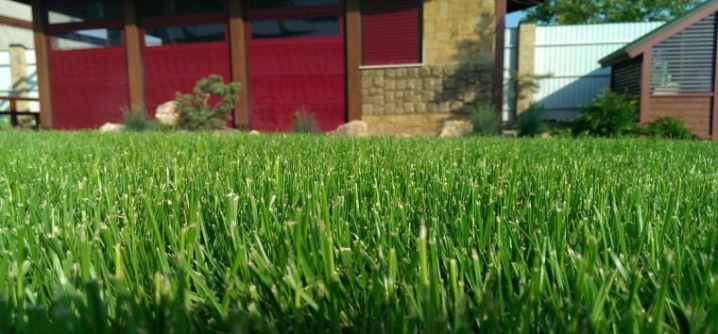
Helpful hints:
- it is necessary to remove roots and weeds before sowing;
- to increase the looseness of the soil by mixing with river sand, and if necessary, also with peat;
- level the ground before seeding with a rake and flat sticks;
- sprinkle the area immediately after sowing.
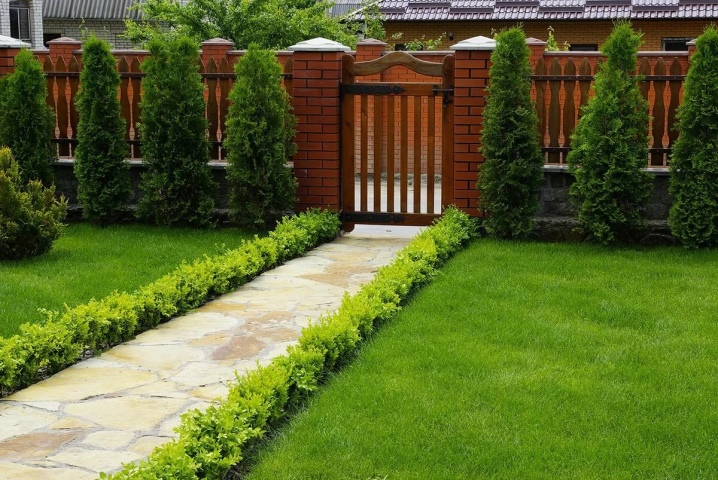
Care Tips
Taking care of your bluegrass lawn is easy. While there are no shoots, sprinkling is carried out daily for 10-15 minutes. As soon as the grass has sprouted, watering is weakened, or rather, they are guided by the condition of the soil. It is critically important to avoid drying out even a small part of the planting, because as a result, the entire root system will suffer. The addition of nitrogen and potassium mixtures helps to increase the juiciness of bluegrass and enhance its growth.
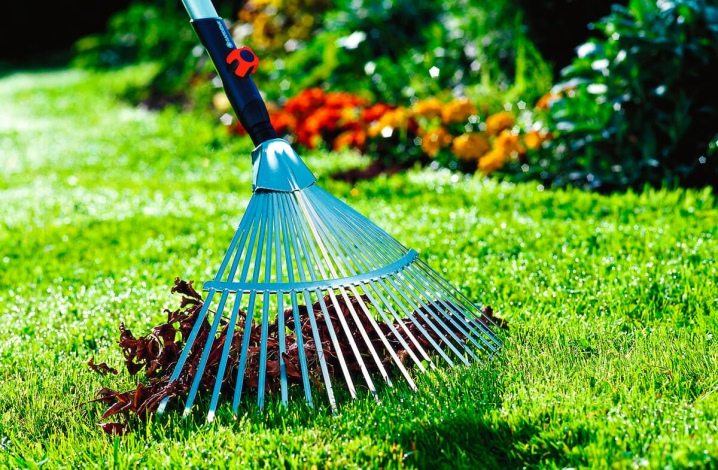
It is recommended to refrain from walking on the lawn for several weeks after sowing. In March, the territory is examined, clear elevation changes are removed. April is the time for mineral supplements. In the last third of spring, dry foliage is removed and the first haircut is done; June haircut is combined with trimming borders. In July and August, they water, feed and mow the lawn, and preparation for winter includes the removal of deformed areas and over-sowing of new seeds.
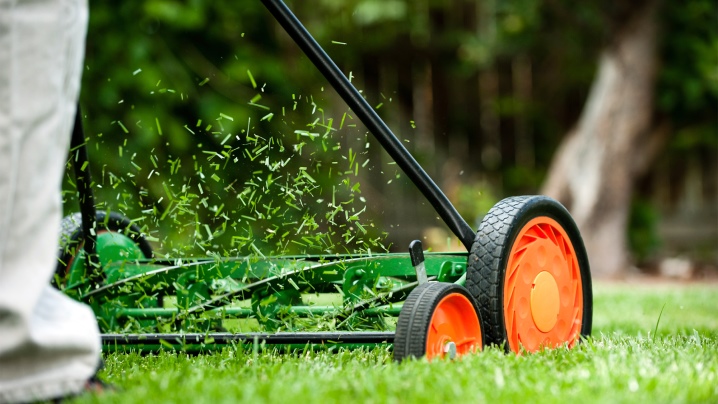
Is it compatible with other herbs?
Yes, this crop can be easily combined with a wide variety of lawn plants. However, it is best to combine bluegrass with sustainable plantings, as delicate species may be crowded out. Lianas of various types and all kinds of herbs with large flowers are attractive neighbors for the edible steppe bluegrass. The meadow type of plant is combined with tulips. And the common steppe bluegrass forms chic transitions with other lawn grass.
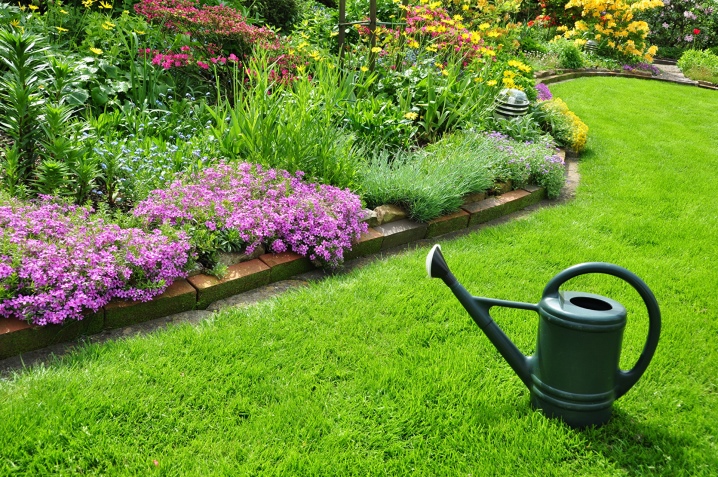
Review overview
It is often mentioned in consumer reviews that bluegrass grows slowly. Waiting for seedlings to emerge can be tedious, but less mowing is required. In about a month, the bluegrass will suppress any weeds. The reviews note the special longevity of this culture. Plain meadow bluegrass without impurities has the best reputation (although this planting material is quite expensive).
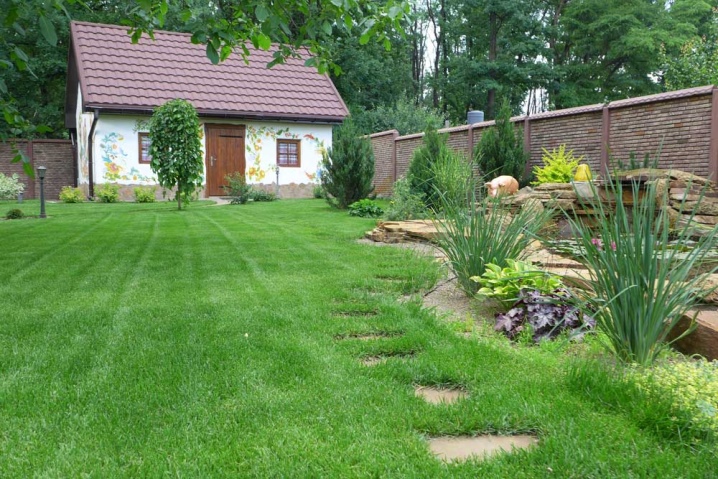
The following video will tell you how to cut bluegrass.



































































The comment was sent successfully.